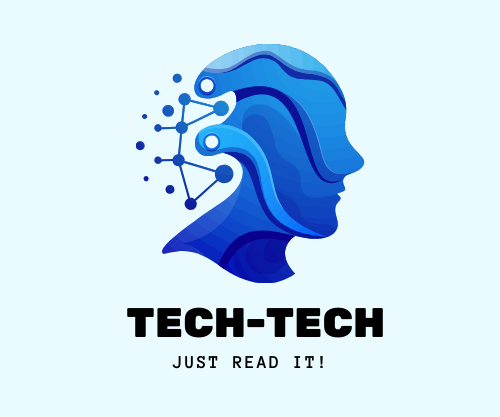by Sami Belhadj
Chapter 1: The Mirage of Safety
Daniel Holden had always believed in safety. Growing up in a financially conservative household, his father had once told him, “The safest place for money is where it’s earning, not gambling.” That mantra became the cornerstone of Daniel’s life. He avoided risks, relying on steady income sources, low-yield government bonds, and a well-maintained property to shield him from the chaos of the modern economy.
Even as an actuary, Daniel’s understanding of financial mathematics was deeply theoretical—precise calculations, devoid of real-world chaos. But the Great Financial Crisis of 2008 had left a bitter taste in his mouth. He had watched governments print trillions to bail out banks deemed “too big to fail.” Privatized profits, socialized losses. It infuriated him, but not enough to act. He had written it off as yet another ripple in the endless churn of macroeconomic waves.
That is, until Bitcoin entered his life like a quiet whisper, growing louder with each passing year.
Chapter 2: The First Glimmer
The first time Daniel heard about Bitcoin, it was during a late-night dinner conversation with his wife, Miriam. “Some kind of… digital gold?” she mused, holding up her phone with an article titled ‘Bitcoin Breaks $1 Mark.’
He scoffed. “Digital gold? Sounds like digital nonsense. It’s probably a scam.”
At the time, Daniel had no reason to think otherwise. Bitcoin was for gamblers, speculators, and those who thought of finance as a game. Daniel was not one of them. Years passed, and Bitcoin grew in popularity, but to him, it was still just “magic internet money.”
Even when his work took him into the realm of blockchain consulting, he treated the technology as a curiosity rather than a revolution. The projects he worked on were riddled with hype, and many, he suspected, were outright scams. It only reinforced his belief that the entire crypto world was nothing more than a casino for the reckless.
Chapter 3: The Breaking Point
By 2020, Daniel was older and wealthier but also more disillusioned. The COVID-19 pandemic brought the world to its knees, and with it came the familiar sound of central banks revving up their money printers. This time, it was deafening.
“Money printer goes brrr.” It was a meme at first. But as Daniel watched trillions of dollars flood into the system, he felt something shift inside him. Inflation wasn’t an abstract risk anymore—it was a tidal wave barreling toward him. His savings, carefully built over decades, suddenly felt fragile. He needed a hedge, something outside the crumbling walls of fiat currency.
Reluctantly, Daniel began to dip his toes into the world of cryptocurrency. He diversified cautiously: some Bitcoin, some Ethereum, and a smattering of other promising tokens. But his faith in the crypto ecosystem remained tenuous.
Then came the Terra collapse. The “not-so-stablecoin” unraveled spectacularly, dragging his investments with it. For Daniel, it was a nightmare made real—his conservative upbringing screaming at him, “I told you so.” Yet, amidst the wreckage, Daniel realized something unexpected: he was still standing. The loss wasn’t fatal. The risk hadn’t destroyed him.
And, curiously, Bitcoin had weathered the storm better than anything else.
Chapter 4: The Revelation
It wasn’t until Daniel picked up The Bitcoin Standard that the pieces began to fall into place. The book reframed everything he thought he knew about economics. It challenged the Keynesian doctrines he had implicitly accepted and introduced him to Austrian economics—a world where money wasn’t just a tool for transactions but a cornerstone of civilization.
For the first time, Daniel understood Bitcoin’s true purpose: it wasn’t just a speculative asset; it was a rebellion against a broken financial system. Bitcoin wasn’t trying to be better money—it was trying to be the hardest money, impervious to inflation, manipulation, and centralization.
The Great Financial Crisis. COVID-19. The endless cycles of booms and busts. It all clicked. Bitcoin was designed for this. It was the lifeboat, waiting for those brave enough to climb aboard.
Chapter 5: A New Philosophy
Daniel began to see the world through a new lens. Every dollar he held felt like a liability, eroding under the weight of inflation. Every stock, bond, and asset was tied to a system teetering on the brink of collapse. Bitcoin, on the other hand, was untethered, decentralized, and finite.
For the first time in his life, Daniel embraced risk—not as a gamble but as a necessity. He didn’t just buy Bitcoin; he adopted it as a philosophy.
When friends asked him why, he would smile and say, “I used to think Bitcoin was the risk. Now I see it as the hedge against everything else.”
Chapter 6: The Future
Daniel’s journey wasn’t without fear. He knew the world was in a precarious place, and Bitcoin wasn’t a magic bullet. It couldn’t solve humanity’s problems overnight. But it offered something he hadn’t felt in years: hope. A belief that, amidst the chaos, there was a way forward—a system built on transparency, scarcity, and freedom.
He began writing about his journey, not to convince others to buy Bitcoin, but to encourage them to question their assumptions. To challenge the status quo. To see beyond the “magic internet money” headlines and understand what Bitcoin truly represented.
As the years passed, Daniel watched the world grapple with its financial demons. Inflation surged, governments clamped down, and the old system strained under its own weight. But Bitcoin endured. It was the hardest money, and it refused to break.
And so, Daniel held on. Not out of faith, but out of understanding.
In the end, he wasn’t betting on Bitcoin. He was betting on humanity’s ability to learn from its mistakes and build something better.
The End
